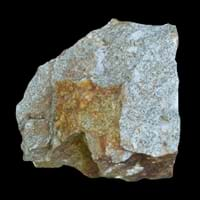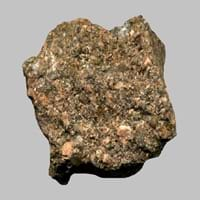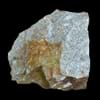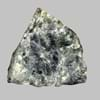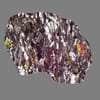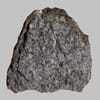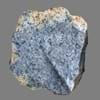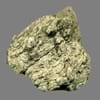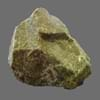Tonalite and Arkose
Definition
Definition
Tonalite is a coarse-grained plutonic rock consisting mainly of sodic plagioclase, quartz, and hornblende or other mafic minerals with phaneritic texture
Arkose is a sedimentary rock, specifically a type of sandstone containing at least 25% feldspar
History
Origin
Tonale, Italy
France
Discoverer
Unknown
Alexandre Brongniart
Etymology
From Tonale Pass, northern Italy, + -ite1
From Auvergne region of France used by a French geologist Alexandre Brongniart in 1826 who applied this term to some feldspathic sandstones
Class
Igneous Rocks
Sedimentary Rocks
Sub-Class
Durable Rock, Hard Rock
Durable Rock, Hard Rock
Family
Group
Plutonic
Not Applicable
Other Categories
Coarse Grained Rock, Fine Grained Rock, Medium Grained Rock, Opaque Rock
Coarse Grained Rock, Opaque Rock
Texture
Texture
Phaneritic
Clastic
Color
Black, Brown, Light to Dark Grey, White
Reddish Brown
Maintenance
Less
Less
Durability
Durable
Durable
Water Resistant
Yes
Yes
Scratch Resistant
Yes
Yes
Stain Resistant
Yes
Yes
Wind Resistant
No
No
Acid Resistant
Yes
Yes
Appearance
Banded and Foilated
Rough and Dull
Uses
Architecture
Interior Uses
Decorative Aggregates, Entryways, Flooring, Homes, Interior Decoration
Decorative Aggregates, Homes, Interior Decoration
Exterior Uses
As Building Stone, As Facing Stone, Paving Stone, Garden Decoration, Office Buildings
Paving Stone, Office Buildings
Other Architectural Uses
Curbing
Whetstones
Industry
Construction Industry
As Dimension Stone, Cement Manufacture, Cobblestones, Construction Aggregate, for Road Aggregate
Cement Manufacture, Construction Aggregate, for Road Aggregate, Production of Glass and Ceramics, Raw material for the manufacture of mortar
Medical Industry
Not Yet Used
Not Yet Used
Antiquity Uses
Artifacts, Sculpture
Artifacts, Sculpture, Small Figurines
Other Uses
Commercial Uses
Cemetery Markers, Creating Artwork
In aquifers, Soil Conditioner, Source of Magnesia (MgO), Tombstones
Types
Types
Dacite
Not Available
Features
Is one of the oldest rock, Typically speckled black and white.
Available in Lots of Colors and Patterns, Generally rough to touch, Is one of the oldest rock
Archaeological Significance
Monuments
Not Yet Used
Not Yet Used
Famous Monuments
Not Applicable
Not Applicable
Sculpture
Used
Used
Famous Sculptures
Data Not Available
Data Not Available
Pictographs
Not Used
Not Used
Petroglyphs
Not Used
Not Used
Figurines
Used
Used
Fossils
Absent
Present
Formation
Formation
When alkali feldspar is extracted from granite, it changes to granitoid and later, it becomes tonalite with quartz as major mineral.
Arkose rock forms from the weathering of feldspar-rich igneous or metamorphic rock, most commonly granitic rocks, which are primarily composed of quartz and feldspar.
Composition
Mineral Content
Albite, Amphibole, Apatite, Biotite, Feldspar, Hornblade, Ilmenite, Magnetite, Manganese Oxides, Olivine, Plagioclase, Pyroxene, Quartz, Sulfides, Titanite, Zircon
Calcite, Clay, Clay Minerals, Feldspar, Micas, Quartz
Compound Content
NaCl, CaO, MgO, Silicon Dioxide
Aluminium Oxide, CaO, Iron(III) Oxide, Potassium Oxide, MgO, Sodium Oxide, Silicon Dioxide
Transformation
Metamorphism
Yes
No
Types of Metamorphism
Burial Metamorphism, Cataclastic Metamorphism, Contact Metamorphism, Hydrothermal Metamorphism, Impact Metamorphism, Regional Metamorphism
Not Applicable
Weathering
Yes
Yes
Types of Weathering
Biological Weathering, Chemical Weathering, Mechanical Weathering
Biological Weathering, Chemical Weathering, Mechanical Weathering
Erosion
Yes
Yes
Types of Erosion
Wind Erosion
Coastal Erosion, Glacier Erosion, Water Erosion, Wind Erosion
Properties
Physical Properties
Hardness
6-7
6-7
Grain Size
Medium to Fine Coarse Grained
Coarse Grained
Fracture
Conchoidal
Conchoidal
Streak
Bluish Black
White
Porosity
Very Less Porous
Highly Porous
Luster
Subvitreous to Dull
Dull
Cleavage
Not Available
Not Available
Toughness
2.1
Not Available
Specific Gravity
2.86-3
0
Transparency
Opaque
Opaque
Density
2.73 g/cm3
Not Available
Thermal Properties
Specific Heat Capacity
0.92 kJ/Kg K
10
Not Available
Resistance
Heat Resistant, Pressure Resistant, Water Resistant
Heat Resistant, Impact Resistant, Pressure Resistant
Reserves
Deposits in Eastern Continents
Asia
Not Yet Found
China, India, Kazakhstan, Mongolia, Russia, Uzbekistan
Africa
Egypt
Namibia, Nigeria, South Africa
Europe
Finland, Germany, Italy, Romania, Sweden, Turkey
Austria, Denmark, Germany, Great Britain, Netherlands, Norway, Poland, Sweden, Switzerland, United Kingdom
Others
Not Yet Found
Greenland
Deposits in Western Continents
North America
USA
Canada, USA
South America
Argentina, Bolivia, Chile, Colombia, Ecuador, Peru
Brazil
Deposits in Oceania Continent
Australia
New Zealand, South Australia, Western Australia
New South Wales, New Zealand
All about Tonalite and Arkose Properties
Know all about Tonalite and Arkose properties here. All properties of rocks are important as they define the type of rock and its application. Tonalite belongs to Igneous Rocks while Arkose belongs to Sedimentary Rocks.Texture of Tonalite is Phaneritic whereas that of Arkose is Clastic. Tonalite appears Banded and Foilated and Arkose appears Rough and Dull. The luster of Tonalite is subvitreous to dull while that of Arkose is dull. Tonalite is available in black, brown, light to dark grey, white colors whereas Arkose is available in reddish brown colors. The commercial uses of Tonalite are cemetery markers, creating artwork and that of Arkose are in aquifers, soil conditioner, source of magnesia (mgo), tombstones.
|
||
|
||
|
